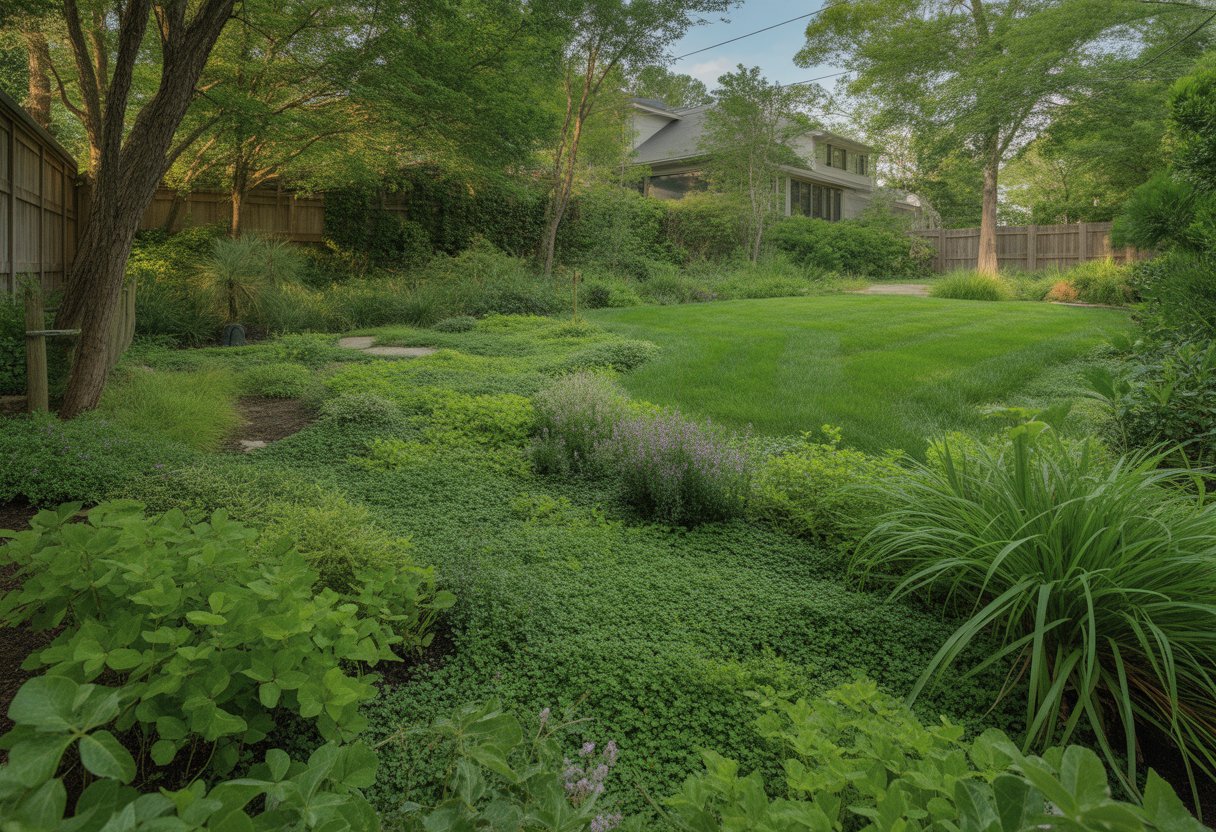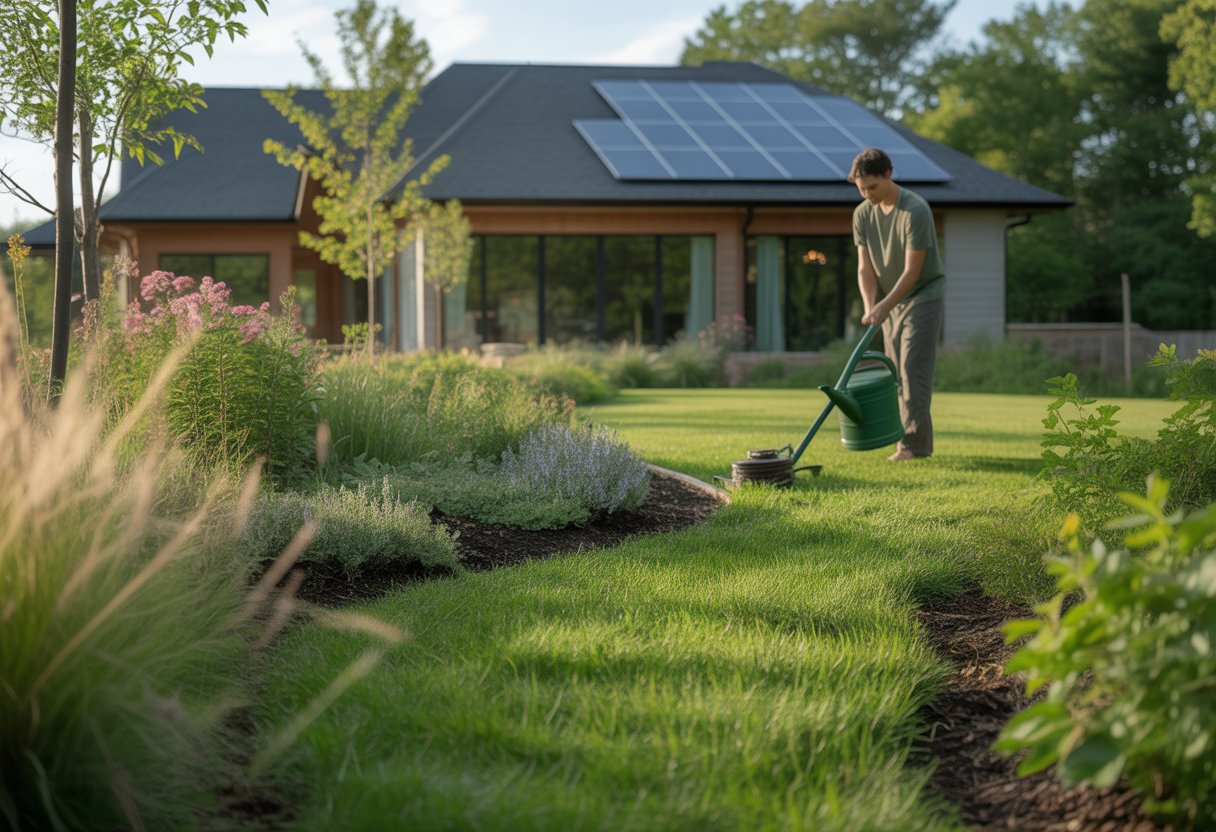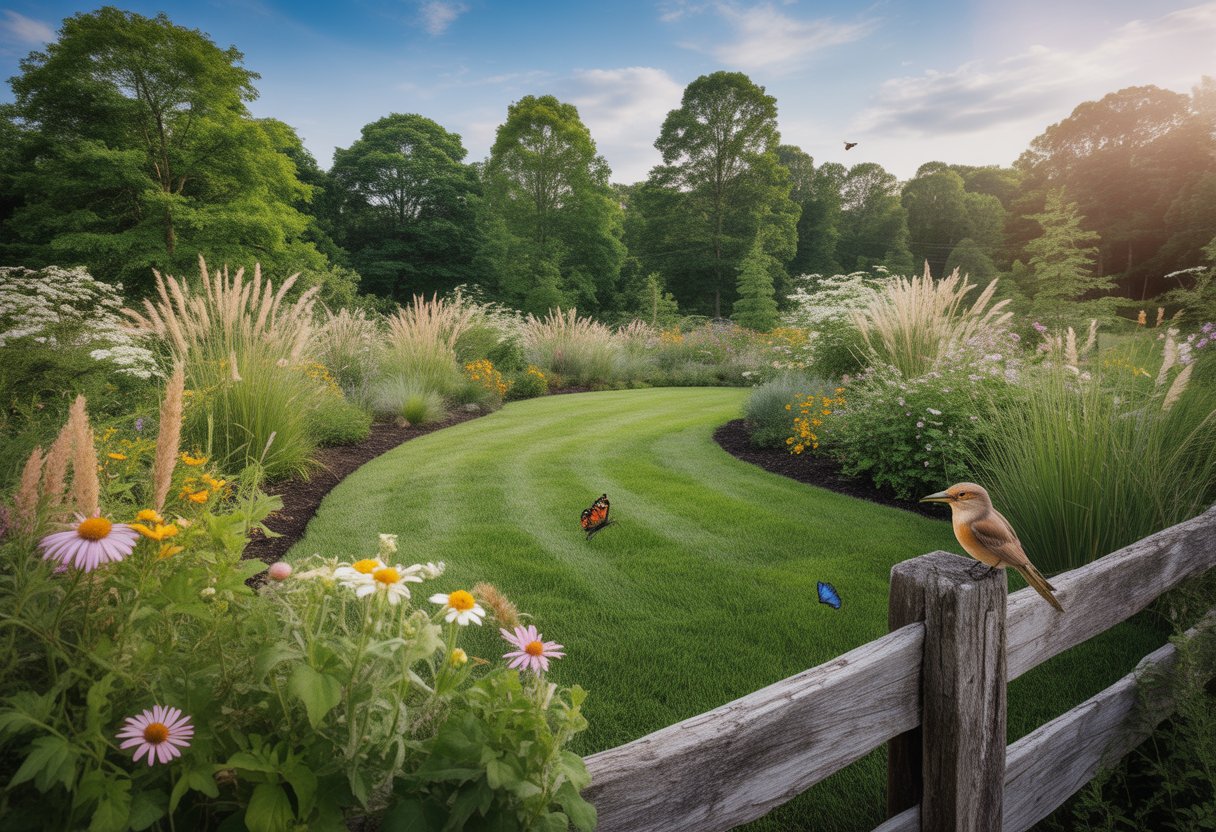Eco-Friendly Lawn Alternatives Virginia: Sustainable Choices for Your Yard
A lot of Virginia homeowners are looking for eco-friendly lawn alternatives these days. Folks want to use less water, spend less on maintenance, and support local wildlife—all without sacrificing a nice-looking yard.
Native grasses, clover, moss, and groundcovers thrive in Virginia’s climate. These options need fewer resources than the usual turfgrass and honestly, they just make life easier.

Choosing native plants and low-water groundcovers can give you a sustainable, attractive lawn in Virginia—no endless fertilizing or watering required. These swaps help conserve water, cut down on chemical runoff, and boost biodiversity.
People who try these options keep their yards green while sticking to environmental goals. Plus, these alternatives adapt well to Virginia’s unpredictable weather.
Why Choose Eco-Friendly Lawn Alternatives in Virginia
Eco-friendly lawn alternatives give you a real chance to support local ecosystems and use fewer resources. By cutting back on chemicals and water, you help create healthier environments and give wildlife a fighting chance—even in Virginia’s sometimes finicky climate.
Environmental Benefits
Eco-friendly lawns sidestep a lot of environmental damage by skipping synthetic pesticides and fertilizers. Those chemicals often wash into streams and rivers, polluting the water and harming fish.
Using natural compost boosts soil health. It adds organic matter and wakes up all those good microbes, making your lawn tougher and more resilient.
If you swap out ordinary grass for native plants or low-maintenance ground covers, you’ll see less soil erosion. These plants fit right in with the local climate, so they need less TLC and keep the ground stable.
Reducing Water and Chemical Use
Virginia summers can get pretty dry, which makes water conservation a real concern. Lawns planted with drought-resistant options need way less water than the old-school kind.
These lawns also cut out most pesticides. That’s a win for human health and for all those bees and butterflies we rely on.
Low-maintenance lawns mean you’re mowing less, so you burn less gas and the air stays cleaner. It’s a small thing, but it adds up—especially in the suburbs or out in the country.
Improving Biodiversity
Eco-friendly lawns bring in more plant and animal life than the usual grass-only approach. They attract pollinators like bees and butterflies, which help keep Virginia’s plants growing.
When you plant a mix of species, you get a tougher ecosystem that naturally keeps pests in check. That means less need for chemical sprays.
Native species help Virginia’s natural systems stay strong and fight back against invasive plants and climate stress. It just feels right to support what already belongs here.
Best Groundcover Options for Virginia Lawns
Virginia’s climate lets you pick from all kinds of low-maintenance, eco-friendly groundcovers. You’ll find hardy native grasses, clover, moss for the shady corners, and even some flowering perennials.
Each one works best in different spots—some like sun, some prefer shade, and others don’t mind a little foot traffic.
Native Grasses and No-Mow Lawns
Fine fescue stands out among native grasses in Virginia. It handles drought, needs almost no mowing, and just generally makes life easier for homeowners.
If you plant a no-mow lawn with fine fescue or similar natives, you’ll use less water and barely ever haul out the mower. These grasses grow dense and deep, so they help stop erosion.
Native grasses also give local wildlife a place to hang out and find food. The best time to seed them is early fall—just make sure the seeds touch soil and keep them watered until they’re established.
Clover and Microclover Lawns
White clover and microclover naturally boost soil fertility by fixing nitrogen. Dutch white clover, which you see a lot, grows low and mixes nicely with grasses.
Microclover has smaller leaves and looks more uniform. It stands up to foot traffic, doesn’t need much water, and you can ditch the fertilizer.
Clover lawns draw in pollinators, especially bees, and help keep your lawn healthy with less effort. They fill in fast and you can even overseed them into your existing grass.
Moss and Shade-Loving Groundcovers
Moss works great in shady or damp spots where grass just refuses to grow. It likes acidic, compacted soil, which you’ll often find under big trees.
Add in plants like common blue violet and wild strawberries for some variety and texture. These also need little water and you don’t have to mow them.
Other shade fans—like creeping jenny and creeping thyme—can take a bit of foot traffic and help control erosion on slopes or awkward corners.
Flowering Alternatives: Wildflowers and Creeping Perennials
Wildflowers, including dandelion and Virginia’s own natives, bring bursts of color and attract pollinators. They’re a magnet for bees and butterflies.
Creeping perennials such as creeping phlox, stonecrop (sedum), and creeping jenny spread out quickly and can handle drought once they get going. They’re tough groundcovers for paths and garden edges.
These flowering choices need less maintenance than regular lawns and you’ll barely have to reach for chemicals. They also make the soil healthier, thanks to their varied roots.
Designing and Maintaining Your Eco-Friendly Lawn

Getting a sustainable lawn going in Virginia takes some planning and a bit of ongoing care. You’ve got to know your land, pick the right plants, and keep soil health in mind.
Site Assessment, Drainage, and Soil Testing
Start with a soil test. It’ll tell you about pH, nutrients, and texture so you can add what’s needed for strong plant growth.
Check how water drains. If water sits too long, roots might rot and pests can move in. Sometimes you’ll need a French drain or just a better slope to fix it.
High-traffic spots get compacted—so aerate those areas to help air and water move through the soil. Laying this groundwork makes everything else easier.
Selecting Plants for Sunny and Shaded Areas
Some plants love sun, others don’t. Native grasses and tough perennials thrive in sunny areas, while turf grass mixes and drought-tolerant covers work too.
For shade, go for shade-tolerant plants like liriope or woodland wildflowers. Toss in some herbs or berries if you want something edible.
Mixing it up with a cottage garden vibe keeps things interesting and eco-friendly. Stick with native or well-adapted plants to save on water and skip the chemicals.
Composting and Natural Lawn Fertility
Compost is your friend. It naturally feeds the soil and you won’t need as much fertilizer.
Save yard waste and kitchen scraps for your compost pile. It’s an easy way to recycle nutrients right in your own yard.
A combo of compost and mulch locks in moisture and keeps weeds down. Over time, this approach builds up soil fertility and keeps your eco-friendly lawn looking good.
Eco-Friendly Lawns and Wildlife in Virginia

Eco-friendly lawns in Virginia offer real benefits for wildlife. They encourage native species and reduce the bad side effects of standard lawn care.
Supporting Pollinators and Biodiversity
Native plants draw in all sorts of pollinators—bees, butterflies, even moths. If you plant native grasses and wildflowers, you’ll give these insects more food and better habitat.
Less pesticide means pollinators stay safer. Plants like Virginia mountain mint and Purple coneflower help keep everything in balance and attract different types of wildlife.
Native species also keep soil healthier and cut back on water use. You end up with a landscape that rolls with the punches and supports birds, bugs, and everything else that calls Virginia home.
Reducing Harmful Lawn Practices
Conventional lawns usually depend on pesticides that hurt beneficial insects and mess with soil microbes. Eco-friendly lawns cut back on chemicals or skip them entirely, which helps pollinators and lets the soil ecosystem recover.
If you mow less often and let your grass grow to different heights, you’ll actually encourage natural pest control. Plus, earthworms and microbes get a better shot at doing their thing—like aerating the soil and cycling nutrients.
Skip the synthetic fertilizers to avoid runoff that ends up polluting local waterways. Compost or organic amendments feed your plants in a safer way and slowly build up soil fertility, which is honestly better for long-term lawn health and the creatures living nearby.
